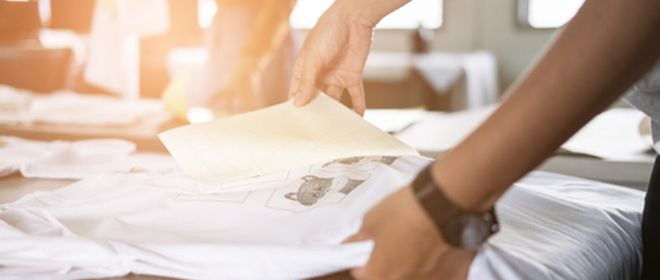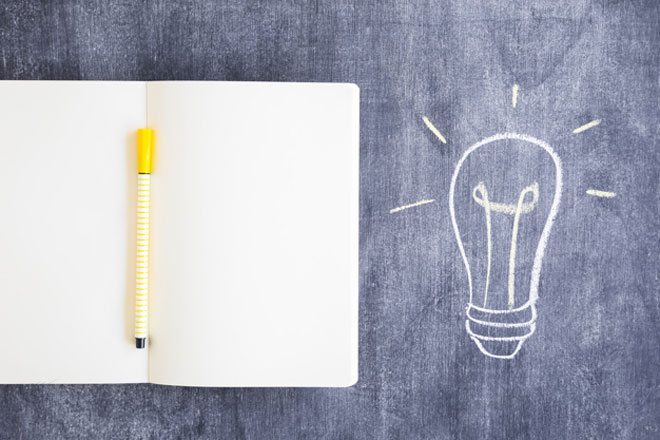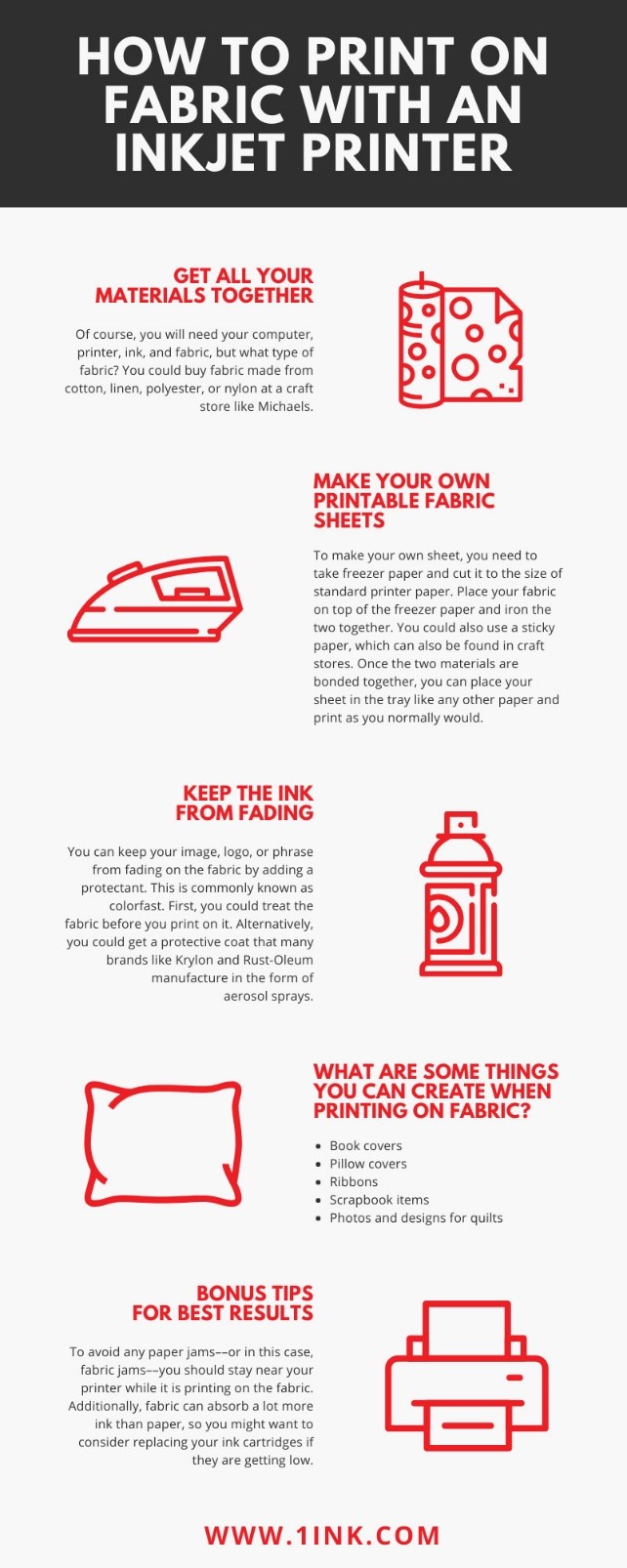
Have you ever wanted to take an ordinary piece of fabric and turn it into something unique? Of course, you could take out your sewing kit and try to sew something onto the fabric, but not everybody is confident in their sewing ability. You also could try a classic iron-on, but those never last as long as we wish. So what else could you do? Well, you could use your inkjet printer and print a logo, design, or phrase on it. Does that sound complicated to you? Luckily, it is rather simple. Continue reading to learn how to print on fabric with an inkjet printer.
Get all your materials together
Of course, you will need your computer, printer, ink, and fabric, but what type of fabric? You could buy fabric made from cotton, linen, polyester, or nylon at a craft store like Michaels.
On the other hand, you could take some old fabric and cut it to the size of your printer tray (likely 8.5 x 11 inches).
To make your own, you need only a few household items such as scissors, a measuring tape, an iron, ironing board, freezer paper, and some patience. Let’s get into how you can do this.
Make your own printable fabric sheets
So you chose the crafty route, after all. Good for you! To make your own sheet, you need to take freezer paper and cut it to the size of standard printer paper. Unless you have a larger printer, in which case you cut the sheet to whatever size you want, but we are going to assume you have a regular household printer.
That said, you should cut your freezer paper to 8.5 x 11 inches, and your fabric slightly smaller––that way, you will have some margins with which to work. Next, you need to bust out that good iron and ironing board.
Place your fabric on top of the freezer paper and iron the two together. You could also use a sticky paper, which can also be found in craft stores. Regardless of what you choose, your fabric needs some sort of paper to enable it to go through the printer easily.
Once the two materials are bonded together, you can place your sheet in the tray like any other paper and print as you normally would. After a few seconds, you will have a piece of fabric with your desired image on it. Of course, you can skip this part if you simply purchased fabric sheets.
Keep the ink from fading
Everybody has that one faded shirt in their wardrobe. There are two reasons your shirt has faded: washing and the material. The fabric itself does not hold color pigment very well, and each time you wash a fabric, the process of washing breaks down the pigment in the material.
You can keep your image, logo, or phrase from fading on the fabric by adding a protectant. This is commonly known as colorfast. While there are several ways to prepare your fabric colorfastness, there are two primary ways to treat your fabric.
First, you could treat the fabric before you print on it. This process involves soaking the fabric in a particular formula that you can purchase or make yourself. Alternatively, you could get a protective coat that many brands like Krylon and Rust-Oleum manufacture in the form of aerosol sprays.
One of the best ways to preserve the ink on any material––fabric or not––is the ink itself. If you are not using quality ink, your image will not look its best, and the color likely won’t last either.
However, we know that many of you try to avoid buying the manufacturer’s ink because it is so expensive. At the same time, you feel stuck because you know the brand name ink usually has the best quality, right? Not necessarily. In fact, there are more affordable ink alternatives, such as remanufactured and compatible ink cartridges.

What are some things you can create when printing on fabric?
We are glad you asked because there are several different projects you could experiment with. For example, some of the items you can make include:
- Book covers
- Pillow covers
- Ribbons
- Scrapbook items
- Photos and designs for quilts
Challenge your inner creativity and think outside the box. These ideas only scratch the surface of what you can create when printing fabric at home.

Bonus tips for best results
Of course, your printer works best with paper and other common printing materials. To avoid any paper jams––or in this case, fabric jams––you should stay near your printer while it is printing on the fabric. If you set yourself up for success with the correct materials and followed the steps we mentioned before, you should not have any issues.
Additionally, the fabric can absorb a lot more ink than paper, so you might want to consider replacing your ink cartridges if they are getting low. If you run out of ink halfway through the print, you won’t be able to “reprint” the fabric and have a good outcome. If you attempt to “reprint,” you will notice that any lines that are printed twice will be thicker, resulting in an inconsistent print.
There is no question that everybody needs a printer in their home to print documents and photos. However, a lot of people forget they can print on fabric with an inkjet printer and can also use other print materials such as glossy paper for photos, stickers, decals, and more.
If you are looking for a hobby like crafting or scrapbooking during this time of uncertainty, your inkjet printer can handle it. Not to mention, you can create a meaningful gift for somebody by making it unique with fabric.
However, you should not have to break the bank with name-brand ink cartridges, especially when you can get alternatives at a better price that are just as good as the manufacturer’s cartridges.
Here at 1ink.com, we believe your printer ink should be affordable and eco-friendly, which is why we specialize in discounted remanufactured and compatible ink cartridges. Our team focuses on providing high-quality ink at low prices to our customers without sacrificing quality.
So, whether you are looking for Canon, Dell, HP, Samsung, Lexmark, or Epson replacement cartridges, our extensive inventory has you covered. Contact us today for more information.

